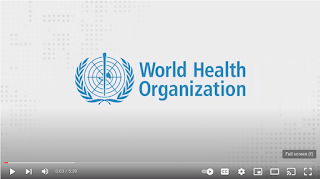#17,222
Although couched in the polite language of diplomacy, today's statement from the World Health Organization's Regional Director for Europe Dr. Hans Henri P. Kluge, reiterates their growing concerns over recent reductions in infectious disease surveillance and reporting around the globe, and less proactive measures to reduce the spread of COVID.
You can watch the brief (5 min) statement by clicking the video at the top of this blog, or read the transcript below.
Statement – Science, surveillance, responsibility: the essentials to addressing the ongoing COVID-19 challenge
10 January 2023
Statement
Reading time: 2 min (632 words)
Statement by Dr Hans Henri P. Kluge, WHO Regional Director for Europe
Thank you for joining us.
Science, surveillance, responsibility: 3 words that encapsulate my 3 main messages to the WHO European Region today, amid the latest developments in the COVID-19 narrative.
First, going with the science.
From the information available to WHO, the SARS-CoV-2 virus variants circulating in China are those that have already been seen in Europe and elsewhere.
We share the current view of the European Centre for Disease Prevention and Control (ECDC) that the ongoing surge in China is not anticipated to significantly impact the COVID-19 epidemiological situation in the WHO European Region at this time.
But we cannot be complacent.
While we acknowledge that China has been sharing virus sequencing information, we need detailed and regular information, especially on local epidemiology and variants, to better ascertain the evolving situation.
It is not unreasonable for countries to take precautionary measures to protect their populations, while we are awaiting more detailed information that is shared via publicly accessible databases.
For those countries in our region introducing precautionary travel measures at this time, we are calling for such to be rooted in science, to be proportionate and non-discriminatory.
That brings me to my second message – surveillance.
Over the past year, many countries in our region have greatly reduced their surveillance capacity for COVID-19.
In the first 5 weeks of 2022, variant information on 1.2 million cases was submitted as part of weekly surveillance data to WHO and our partner, the ECDC. However, this declined to about 90 000 cases in the last 5 weeks of the year.
We commend European countries that have maintained strong genomic surveillance – including Denmark, France, Germany and the United Kingdom.
Indeed, recent data from some of these countries are starting to indicate the growing presence of the new XBB.1.5 recombinant virus that has already been spreading rapidly across the United States. XBB.1.5. variant cases in our region are being picked up in small, but growing numbers, and we are working to assess its potential impact.
After 3 long pandemic years – with many countries grappling with overstretched health systems, shortages in essential medicines and an exhausted health workforce – we cannot afford more pressures on our health systems.
Such a threat could come from a new variant of concern, anywhere, anytime – including right here in Europe and central Asia. Building upon the lessons learned, we must be able to anticipate, detect and respond in time. This is true not only for SARS-CoV-2, but any emerging health threat.
Hence my third message for today: responsibility – on the part of governments and the general public alike.
Entering 2023, countries across Europe and central Asia need to redouble their efforts to implement proven effective strategies and avoid being complacent.
This means urgently re-investing in and recommitting to enhanced virologic and genomic surveillance – including wastewater surveillance, as feasible.
This means investing in and safeguarding the health workforce, whose precarious situation in many places could undermine the effective provision of health services.
This means continuing the 5 pandemic stabilizers that have proven so effective:
- increasing vaccine uptake in the general population;
- administering additional vaccine doses to priority groups;
- promoting mask-wearing indoors and in public transportation;
- ventilating crowded and public spaces such as schools, bars and restaurants, open-space offices and public transportation; and
- providing early and appropriate therapeutics to patients at risk of severe disease.
Further, as we have seen, these measures can also reduce the impact of other respiratory infections – in particular, influenza – that our health services are struggling with at this time.
Science, surveillance, responsibility: all of these must come together all the more, as we enter the 4th year of the pandemic to ensure a future for all.
Thank you.
